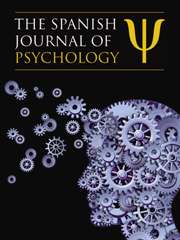Article contents
A Conceptual and Theoretical Analysis of Evaluative Conditioning
Published online by Cambridge University Press: 10 April 2014
Abstract
Evaluative conditioning is best defined as an effect, that is, as a change in the valence of a stimulus that results from pairing the stimulus with another stimulus. This definition has several advantages that are made explicit in this paper. One of the advantages is that it clarifies that evaluative conditioning can be due to multiple processes. Therefore, the conditions under which evaluative conditioning is observed can depend on the processes that underlie a particular manifestation of evaluative conditioning. This could explain why there are so many conflicting results about the conditions under which evaluative conditioning can be found. Future research should adopt a meta-conditional approach that focuses not only on whether a certain condition is crucial for obtaining evaluative conditioning but should also examine when a certain condition is crucial.
El condicionamiento evaluativo se define como un efecto, es decir, un cambio en la valencia de un estímulo que resulta de emparejar ese estímulo con otro. Esta definición tiene varias ventajas que se explicitan en este trabajo. Una de las ventajas es que aclara que el condicionamiento evaluativo puede deberse a múltiples procesos. Las condiciones bajo las cuales se observa el condicionamiento evaluativo dependen, concretamente, de los procesos que subyacen a cada manifestación particular del mismo. Esto podría explicar por qué hay tantos resultados conflictivos referidos a las condiciones bajo las cuales se puede encontrar el condicionamiento evaluativo. La investigación futura debe adoptar un enfoque meta-condicional que no solo se centre en si una condición determinada es crucial para obtener el condicionamiento evaluativo, sino que examine también cuándo esa condición es crucial.
Keywords
Information
- Type
- Articles
- Information
- Copyright
- Copyright © Cambridge University Press 2007
References
- 274
- Cited by

